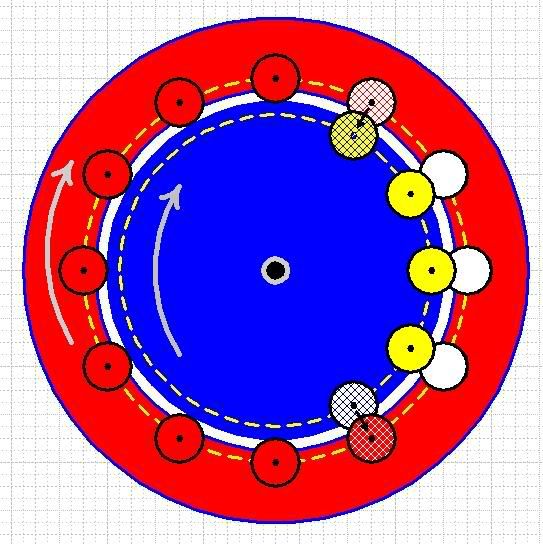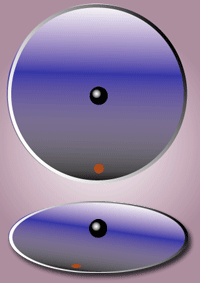rlortie wrote:For the sake of clarity, when looked upon in the form of a gravity wheel, angular momentum converted from symmetrical to asymmetrical and gravitational potential energy is added something is going to turn.
Whilst on the subject of angular momentum it seems appropriate to paste my latest blog entry here since it has a bearing on the research you carried out on the Keenie wheel.
===============================================
+IHM+IHM+ 
The above figure shows the layout of a optimally designed Keenie wheel. I have exaggerated the distance apart of the blue and red tracks for the weights so that their progress can more easily be seen. Keenie used gravity to switch tracks because it was a simple method. I'm sure a mechanical engineer will provide a more efficient method.
I doubt if the historic wheel is optimally designed since I doubt if Pop Keenie appreciated the importance of precisely matching the angular momentum of the blue wheel without weights and the red wheel with weights.
It seems more likely to me that he got there by a process of trial and error.
With matched wheels the "fighting" against each other can be taken up by a torque tube or rod with the blue wheel mounted at one end and the red at the other. This torque will spin the whole assembly if not restrained by a brake or generator on the end of the axle.
I know this seems terribly counter-intuitive and I wouldn't believe it myself except for two things.
1) I've approached the problem for a different direction, the Vesica Pisces design, where it is much easier to see what is going on.
2) We can be fairly confident that the Keenie wheel worked from the evidence that has been gathered by docfeelsgood and others. Doc even has remnants of the wheel.
===============================================
In your research did you measure and arrange the angular momentum of the two wheel components to be in the same relationship as in the Vesica design?
If you did I cannot understand why you were not successful in achieving a running wheel.




